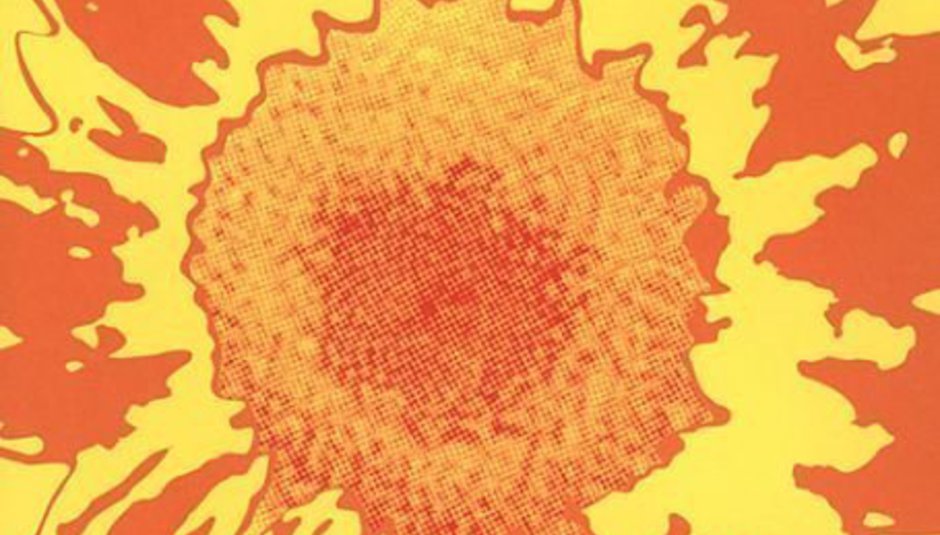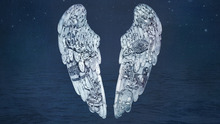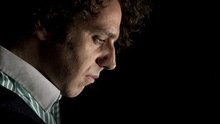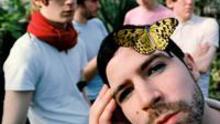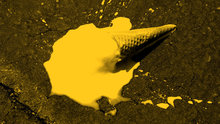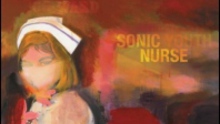There are still artists out there who are causing music to buckle and strain at the seams, who are finding new and inventive ways to turn familiar ideas inside out and bend some fresh life out of the archaic “rock” format. It can take patience and understanding—two qualities currently in perilously scarce supply—but anyone who is in this for the long haul is bound to come around to Oneida eventually. Most people are still trying to get their heads around Rated O, the band’s triple album opus from last year, but here we turn to a similarly ambitious double record they delivered for the Version City label in 2002.
Each One Teach One is a dense, multifaceted work, with two entire songs taking up one side each of the vinyl release, including the notorious ‘Sheets of Easter’, a song based around single-word repeating mantras that acts as a kind of litmus test as to whether you can get on board with Oneida’s gloriously warped take on familiar rock constructs. But you don’t need me to tell you about it. Here, each band member talks individually about the experience of bringing this singular work into the world, along with a few words from just about everybody involved with the project.
Foreword
Jonathan Cargill (Project Manager, Jagjaguwar): I first saw Oneida play in a basement in Bloomington, Indiana, in 1997 I believe. If I recall, there were maybe six people in attendance, but that didn't stop former member Papa Crazee from getting completely naked. That's pretty much the moment I became a fan.
Manish Agarwal (Press Officer, Jagjaguwar): Each One Teach One proved to be something of a breakthrough for the O in the UK on its release in 2002 — MOJO magazine new band feature and so forth — but the portents weren't good. The Garage show Stevie Chick reviewed for NME took place on May 25, 2001, and was the O's live debut on these shores. I was working at Time Out London back then and recommended the gig in our listings...we had a letter of complaint the following week! Primarily because they opened with the yet to be released ‘Sheets of Easter’, causing half the audience to leave. Strange to think that it's their best-known jam now.
Fat Bobby (Oneida): We worked very hard and very conceptually on the album before it, Anthem of the Moon, which came out of somebody’s crazy dream logic. Some of the stuff we were coming up with was the product of playing or directions that we tracked down and followed. So when we were finished with that album, we were left with a bunch of half finished ideas and some directions to go.
Hanoi Jane (Oneida): The inspiration for the release and for putting it all together was this record label, Version City. They’re friends of ours from Ohio and Pittsburg who were living in New York at the time, and they invited us to put out this double record. It was going to be a cool thing, where it would all be hand screened, limited edition, really nice vinyl. Initially it was vinyl only, and we knew that going into it.
FB: A friend of ours named Doug Mosurock ran a label. It was new, I think he’d put out a release by the 1985, who were a great No Wave-ish Pittsburg band. He liked our music, liked our records, loved seeing us live, and was like, “dude, if you would be willing to put out a crazy double vinyl album, I would love to do something.” It came out in 2002, at a time when there really wasn’t a market for goofy-assed psychedelic contemporary vinyl. [Doug] had this perverse idea, of doing something that would barely exist, that would become sort of a transmission from another world.
Doug Mosurock (Version City label): I figured it'd be cheap, since they had their own recording setup, and we could just let them hammer out longer pieces across four sides of vinyl, a la Hawkwind's Space Ritual. What we'd save on the recording we could put into the presentation, and I wanted to see this elaborate, fold-out silkscreened circular gatefold with astronauts on it or some shit. Jane mentioned the title Alien Souls and talks sort of stayed there.
Kayrock (designer of the acid blotter insert): I remember that we originally wanted to have perforations die cut, like real acid blotter paper, but the price was prohibitive and it was really fun to figure out how to make all of the words fit together. I love typography and word puzzles, and between the spiraling of the letters and the visual vibration of the red and blue inks, it made something that people could really sit down and work to read while listening to the meditative onslaught of ‘Sheets of Easter’. Looking at it today, I like that you really have to spin it in your hands and follow the track of the letters like a record.

Kid Millions (Oneida): I think Doug came up with the [double album] idea and we just thought it was a good fit. He was a big Oneida fan—was front row at so many early shows. So it was a natural connection. At the time it seemed like a very perverse idea. I'm not sure that is easy to understand now with so much stuff coming out vinyl only. At the time I think vinyl was just about considered dead.
DM: After 9/11 I got a new label started up with my friend Rebecca Ross, who was also an Oberlin grad, and was now living in Brooklyn as well. Some money was put together, and we started planning our first release which wasn't split with another label, or left over from an earlier era. The Oneida record was something we both wanted to see come to fruition, and we started to get estimates for artwork and recording. It certainly wasn't the economical project I had initially envisioned. Eventually I remember getting the CD-R of the new recordings, and was struck dumb by what they came up with. Apparently they didn't just want to throw out some practice musings, and had written a whole new album around the same time as Anthem of the Moon that sounded markedly more powerful than anything they'd done so far. Once we heard ‘Sheets of Easter’ we realized we were sitting on a weapon.
HJ: Part of the reason we had a long track on each disc was we had this idea of it being on those old school record changer arms, where you have a second record on the second level, and when the first track finishes it clicks down and the record drops into place. So if you set up a double record, and you have the two long songs each on different pieces of vinyl, they’d both end up on your record player so it naturally goes from one long cut to the next long cut. I remember joking about that, and talking about that, as if it was the spirit of this record. Because that way you can DJ them back to back. Actually, at our record release party for the vinyl, Doug Mosurock was DJ-ing, and he DJ-ed the record by playing ‘Sheets of Easter’ and ‘Antibiotics’ one after the other. He put it to good use.
DM: We actually pulled a Factory Records thing where we initially pressed up 500 copies, then realized we couldn't recoup production fees, even if we sold every last one at the highest and yet most realistic price we could offer. So we did a repress right away, as Secretly Canadian had taken control of the distribution on this title and money was coming back in. In total we made 1,000 copies of Each One Teach One, all printed and assembled by hand. The records were done at the old Europadisk plant in Long Island City. The first pressing has a sort of magenta coloured ink on the inside of the gatefold, and the second pressing used silver ink. It is a very bright-looking record. Either Kid or Papa Crazee looked at the end product and said, “this is obscene”.
Daniel McAdam (Crosshair, sleeve designer): I was particularly happy to do the Each One Teach One art because I'm a screenprinter, and this would be a gatefold LP sleeve that I would actually produce. Enemy Hogs, I just designed and hit ‘send.’ When Each One Teach One was in the works, the boys came through Chicago on tour and stopped over by my apartment, to look at the work in progress. Bands on the road playing and living hard without much shower access get stinky. But this was an order of magnitude beyond the usual. Somebody, I think Papa, was so pungent that my girlfriend (now wife) went out on the fire escape until they left. The smell of Oneida lingered for days.
FB: It was really three different studios that were used, two of which were ours. Partway through the recording of Anthem of the Moon, the album preceding it, we were working at a rehearsal studio building in Williamsburg. We put a makeshift recording and rehearsal studio into a room there, and we ultimately were able to find our own space and build our own studio. Some of the recordings that are on Each One Teach One, what I think of as the last side of the album, so ‘No Label’ and ‘Rugaru’ and ‘Black Chamber’, the bulk of those recordings are from that original space.
Peter Katis (Tarquin Studios): Each One Teach One was one of the ones we did here, and that was totally pre Pro Tools and pre editing. So whenever those guys played a 10-minute song with a driving repetitive beat, that’s all real, it’s all live, there’s no wimpiness, no fixing. They did it the hard way.
FB: Some of the stuff is recorded in our studio space, that would be the original recording of ‘People of the North’, which had come out on Anthem of the Moon, but the one that’s on Each One Teach One is the earlier recording. ‘Sneak Into the Woods’ and ‘Number Nine’, those things were mostly recorded in that second space, the same place we did some following albums, until we lost that space as well, and built our real studio, the Ocropolis. Part of ‘Antibiotics’ was recorded in our first studio and part of it was recorded along with ‘Sheets of Easter’ and ‘Each One Teach One’ at Peter Katis’s Tarquin Studios in Bridgeport, Connecticut, where we’d done a bunch of work prior to that and had mixed a bunch of albums. We mixed the whole thing at Tarquin with Peter.
PK: They did spend a long time here when I first got this house where I live and work now in Bridgeport. I think they were the first band that I ever recorded here. They came in a whole bunch of times, and at the time I was renting a room to a guy just to make money. He didn’t know anything about indie rock or music, and I remember one time Oneida came in for a session, it was maybe their second or third time here. He saw them and looked at them and went, “Oh, those guys.” And I looked at him and said, “what do you mean?” And he said: “They’re loud.” And the closest to shaking the whole house down was definitely Oneida. They were in the live room, which is the closest to the outside, and I remember coming back when they were rehearsing and the house was shaking. And it’s a giant house.
FB: As is typical with us, there were a bunch of different approaches to the recording, as well as to the songwriting. A lot of improvisation and then a lot of very specific compositions. Conceptual compositions in the case of ‘Sheets of Easter’, which then turned into group collaborative work. ‘People of the North’ was like, “dude, I have a song. I’m recording a song. Here it is.” Much more direct, individualist composition. We certainly all contributed that type of composition as well.
Papa Crazee (Oneida): We spent so much time together, and our tour routing was always crazy, just trying to get from town to town. We listened to a lot of psychedelic mix tapes, really trying to find this weird shit. More like this, ‘oh my god, I’m freaking out’ style psychedelia [laughs]. At the same time, Bobby made a bunch of mixes of what he called ‘tragi-psych’. I was always trying to convince him to start a little compilation label, because a few years later the electro thing blew up, and this was all sort of like that, late ’70s and early ‘80s electro funk. Just crazy weird repetitive beats. When I listen to this record again I’m reminded of that, this repetitive, primitive, simple thing, and the psychedelic influence. In terms of actually listening to Neu! and Can, we didn’t, really. We all liked them, and I think we’ve all liked them over the years, and there was certainly a time when we all listened to Neu! But around this time, I think we weren’t.
KM: We were always listening to a wide range of stuff. The only thing I can remember are these ‘Stern Yet True’ mixes of ‘70s and ‘80s NYC/Chicago/Detroit electro that Bobby put together. They were kind of like the Street Jams: Electric Funk compilations on Rhino, but Bobby had some additional tracks he would add. They all came from records that were left on the street in our Clinton Hill neighborhood. We were also listening to what we called ‘tragi-psych’—ie. damaged songs from the psych era that Crazee and Bobby would compile. We'd listen to them on our tours, stuff like I.S.B., Kaleidoscope (the U.S. band), Tiny Tim. This was the stuff that was getting played a lot and informed Anthem of the Moon and Each One Teach One, which are really companion pieces in my mind.
FB: At the time we were making it, we were all way into Royal Trux. The Twin Infinitives album would have been a big touchstone. Similarly, it’s this thing that’s being transmitted to you, and it’s cool if you like it, or if you don’t want to listen to it, that’s fucking fine. To hear someone that’s created this world that’s available to you, if you want it. The other thing is, you buy hip-hop on vinyl, and tons of it is double vinyl. Again, creating worlds that you can get lost in. At that point, in 2001 or 2002, the second Wu-Tang album had come out, Wu-Tang Forever, and that was quadruple vinyl. So that would have been another source of this idea of: here’s this universe.
PC: Probably the first thing about the record was the title. One thing that’s kind of funny about Oneida is that the titles often predate the recordings by a few years. That was on our list, and I remember Bobby and I both being really into history at the time.
HJ: Papa was reading Bury My Heart at Wounded Knee. I don’t know if he got the phrase from that, but he was reading that. So the lyrics for the song ‘Each One Teach One’ that Papa wrote are references to passages from that book. For him, in naming the song that, he was still overtly referring to this culture in America, but the issue for the name was: were we going to name the whole album Each One Teach One? It’s one thing to use it as a reference in a song, but you don’t want to borrow something from another culture for a goddam album name [laughs]. We just made sure we were stealing from a few different groups. But that was Papa’s thing.
FB: Our music does speak to some people very powerfully, which is great and it certainly isn’t unique to us. But you have this one-by-one conversion experience. It’s secretive, Gnostic knowledge being passed along. [The title of the album] was maybe just our way of justifying or defending out lack of widespread popularity, although we don’t take ourselves that seriously. It’s also a phrase that has a great history in the civil rights movement, and in terms of empowering groups who are not in the cultural mainstream. But it would be ludicrous of me to say, [affects voice] “oh yeah, Oneida feels the struggle, man.”
HJ: There’s a lot of use of that phrase in activist movements. The obvious idea from the name—take what you know and pass it on, that’s how you move one person at a time, that’s how you affect change. There are obvious connections to civil rights and other movements with that term. So Papa came up with that idea and made sure it wasn’t just dealing with something from Native American culture, it was actually a broader reference. We were all into it.
FB: ‘Sheets of Easter’ was something that Kid had this vision of, and my memory is he’d been listening to a couple of the early Nico albums. Not Chelsea Girl, but I think The Marble Index or Desertshore, or one of those. He was blown away by some of the disciplined non-rock repetitiveness of that. He came and said, “I have this idea for a song that goes kind of like this, and I’ve written these lyrics”. And we thought about how to record it, and were like, “why don’t we actually write a song that sounds like this weird looped repeating electronic idea that’s in your head?”
PC: The vocals were overdubbed, but it would have been a lot for Kid—well, a lot for all of us—to do that one too many times. Particularly for Kid. I remember as we were going in, he said, “we’re going to do this in one take.” It’s not the kind of song you want to do too many times in the studio. But we played it, felt good about it, and that was it.
FB: It’s an immensely powerful thing to play. I don’t think there was much question in our minds that we would be doing one take of it. Of course, if something goes wrong, we would do another. But we maybe would have waited until the next day. It’s one thing if you are structuring something piece by piece in a studio, but when a band is doing a live recording of a piece, there’s a huge danger in doing another take of it. Because you miss something, and you start down that hallway of ‘getting it right’ and I think it fucks you up. You need to play it enough so that you’re ready to get it right the first time.
HJ: We were all familiar with minimalist composers, people like Steve Reich. I remember Kid coming in with this idea of this super minimalist long cut that would have this hypnotic, transcendent experience to go with it. From the dedication to this one song, or one beat. So he was really the core inspiration for that track, and he came to us saying, “here’s my idea”. And because we’re all boneheads, we were into it readily.
KM: I just remember one of our friends, Pam, being really psyched about the song. That was cool with me. Otherwise it was kind of received like many Oneida songs—mainly with indifference. Though a few people really liked it and asked us if we had it on record. Of course we didn't. That was typical of the O. The songs that people liked the best were the ones we didn't have on record. I think the word “light” was there from the start. There were full lyrics, but they were quickly dropped for the single word repeating mantras. I think the take on the album might be the first take, but I don't remember.
FB: Kid had put together some lyrics and had a vision of these sets of lyrics. His original vision, as I remember it, he had this series of lyrics, and the last word of each line, he wanted to have it hit a really hard loop. Not really like a record skipping necessarily, but some kind of loop that would go through a phased sequence. At that point it wasn’t clear. It was some kind of really powerful driving repetitive thing that somehow changed and drew you in. So we talked a little bit about that and we tried doing some things, like putting in some tape delays, going the Lee Perry route, with some crazy dub shit. And it just didn’t have the power that we wanted. So then we started thinking about, well, how would we play something like this? It has power, it has vision, it has abandon, and it has personality—like slow, subtle changes. It’s not a recorded loop, it’s a musical experience.
HJ: It was a pretty direct flow from Kid’s idea. I think it was literally coming out of listening to a lot minimalist music and wanting to throw this thing together. A lot of those pieces have that experience that, over time, or with a slight contrast, have a radically different sonic effect. That’s what the vocals did. I remember we did the song live and I think we had a vocal track, but then we went and did a bunch of vocal overdubs as well. It was the weirdest overdubbing experience I’ve ever had, because we had the studio lights off, each of you finds your place in the room, you have your mic in front of you, and are just sitting there singing these four words, or mostly just three words. For fifteen minutes. We did that a few times to have a lot of vocals on the recording, so we could play around with them.
PK: I remember they came in and we had to record vocals during the day. Usually we’d do vocals at night, but we’d simply run out of time. They hated the bright, natural light in the studio. Between the live room and the control room there are two doors, double doors. If you go between those two doors it’s a tiny little space, like two feet, and it’s pitch black because there are no windows. They decided that they wanted to do the vocals in that space because it was dark. It was totally ridiculous [laughs]. There was one point where they all wanted to sing at the same time, so four of them stood in this space that could barely hold one person. I’ve never seen anyone else do that. They just didn’t feel it was in the spirit of the project to do it in morning sunlight.
FB: We went on tour in October of 2001, this is the last tour we did with Papa Crazee in our original quartet lineup, and literally every show we opened our set with ‘Sheets of Easter’. Some people loved it, just flipped out. There were very few people that knew Oneida in 2001, not that a ton do now. But we were playing shows, we would be opening for bands we knew, we would be headlining in random towns. I remember playing in Jackson, Mississippi, to 20 people, who were so mad [laughs]. We were the first band in an emo matinee in Baltimore—don’t ask me how we got on that bill. It was a packed room, so no one could get away from the stage. It was amazing for us to have this single thing that we were doing, and some people are reacting as if this is the most antagonistic, perverse thing imaginable that a band could do. It makes sense, looking at it objectively, but it hadn’t really occurred to me that it could be interpreted that way.
HJ: I feel like we played somewhere like Chattanooga, where there was almost no one at the bar, and there was a carnival in town. So at the bar were these scrappy old carnies, like scary dudes with one tooth and a wild look in their eyes. Not a ton of people, I’m talking 15 dudes from a carnival [laughs]. And maybe two other people, a bartender, three fans, and the band we were touring with. So we went up there and played this song for 15 minutes, and I think it pissed them off but also made them happy. I remember them stomping around the room thinking we were saying “die, die, die,” these crazy old hillbilly carny men going “die, die, die,” doing Monty Python style goose-stepping walks around the room.
HJ: Bobby had purchased this RMI keyboard, this woody electric piano that is really a one-trick pony. It sounds great, but it really has one sound. The sound is that main line in ‘Each One Teach One’, the main woody bass-y line in the song. Papa would play that live and Bobby would still be playing his Acetone, his electric organ. That was a key piece to that song, a core sound, and we were jamming out to that when we came up with the song. That was one of the earlier songs where I won’t necessarily play in the key the song is in. It’s intentional—I’ll play a half step off but by using scales or chord relationships that are in the wrong key. So there’s an intentional dissonance. I feel like it began because Bobby had this electric piano he got for $10 from somewhere and it had this killer sound to it. We absolutely got the best out of it, recorded it, and sent it out to pasture.
PC: A lot of Bobby’s lyric writing is history obsessed. I was super obsessed with Native American literature at the time, I think I was reading a lot of Peter Matheson and Bury My Heart at Wounded Knee. All the crazy stuff that’s on Native American history, like Howard Zinn, and just shit I was never taught in school. So [Bobby] had come up with the title earlier and I applied it to what I was reading about. That whole song, it sounds so dumb to say it, but it was basically just different events from Bury My Heart at Wounded Knee [laughs].
HJ: That song’s totally Papa Crazee. Initially it was a phrase that he came across, and I believe related to the Native American movement, but we didn’t just want to take this quote, especially as our name is Oneida. We’re named after the white European ancestry source of that name. We didn’t want to be co-opting Native American culture for the sake of an album. We’re very careful about that, because it’s an issue a lot of us care about and at least feel moderately educated about.
‘People of the North’
HJ: It’s a ‘People of the North’ Viking reference. It’s an Eric the Red Viking reference. But it’s become a band joke, because I was out with shoulder surgery at one point and I was out of playing for a while. Then we were going to go out on a U.S. tour, but I could only do two weeks, so the other guys needed to drive out to the west coast and I flew out to meet them. They played as a duo and called themselves People of the North, because it was two guys from Connecticut and not the guy from the south that’s in the band. So it’s taken on a few meanings.
FB: It’s a pretty bare bones recording. That was one I had done as a song I wanted to present to Oneida. We worked out a band version of it when we were doing Anthem of the Moon. Then we were working on Each One Teach One, and people thought that recording was really cool. It’s a really different approach that fits, and it’s a slightly harsher, maybe more static sound. It’s a plaintive thing rather than an expansive hippy jam [laughs]. We were like, is it cool to put a song on two albums in a row? And we were like, okay, yeah, sure. The song was really born out of this tongue-in-cheek ‘Immigrant Song’ reference, like, “we don’t have any Viking marauder jams” [laughs]. I think that’s where the phrase came from, but the song itself is lyrically more about—burn everything and sail away. Maybe in a less historical, less literal sense.
PC: That one, out of all the tracks, is the most individual. I think it’s pretty much Bobby. There may have been a percussion overdub, maybe Kid played a delayed drum. He had gotten a cheap analogue synth drum. He was up there a lot with that thing, and he just came in one day and he had it. I think there may be a couple of overdubs of one or two of us, but I hear that track and I remember that a lot of that came in pretty fully formed.
‘Number Nine’
PC: We weren’t above being totally, totally, totally goofy [laughs]. I don’t remember why we called it that, except that it was a Beatles reference. It has a Magical Mystery Tour kind of vibe to it.
FB: That was one that Crazee, our departed guitarist and organ player, recorded on a cassette four track. Then he brought that into Tarquin, we put it on Peter’s system, and I don’t remember what we added and what we did. But I do remember that once it was dumped he hauled a stereo mix of it back onto his four track and then recorded vocals backwards onto the cassette, then re-dumped those. So it was this goofy little technical weirdness back and forth, tape to digital.
HJ: That’s a very, very studio cut. It’s a pretty ‘studio’ record, as we go. We’ve never really worried too much about taking the literal live sound to record and putting it out. We’ve always had it as live and recording being two separate processes. Recently, we’ve got more into capturing the live thing on record, or at least recording the live process. That’s also because our live process has gotten more experimental. Whereas before our recording process was definitely the more experimental format. We weren’t conservative live, but we played songs more than we do now. ‘Number Nine’ is very much a studio recording. I don’t even know if I play on it.
‘Sneak Into the Woods’
HJ: I’m very proud of that one. That was a ballad for my lady. I went in one day, she was giving me a ride to the studio. I was going to the studio to just play around on my own and record and have some fun. I had this idea as we were pulling up, and I asked her to help me out to just get one mic level for the drums before she took off. I just threw up one mic over Kid’s drums and had her make sure it wasn’t blowing out too much. She left and I spent not very long, just an hour in the studio, and this idea kept coming really quickly.
FB: That’s Jane. Jane’s love ballad. When we did it live I used to sing some of it along with him. That’s a great song, I love that. It’s the third of the three where one of us created this recording. Kid and I played a bunch of weird-ass percussion, banging on bottles and stirring a bowl of bottle caps with some old rusty dental pick and doing all kinds of goofy Flying Nun-style percussion. But it sounds cool. That’s a brilliant song.
HJ: I recorded these really loose basic drum tracks then immediately laid this delayed guitar sound over it, and then had these lyrics and this melody in mind. It all just came together, and when that happens you get a flood of ideas and the song just builds itself. That’s the great thing about having your own space. The reel-to-reel was set up, the gear was all there, and I just sat there and hopped from one to the other. Then the guys came in and put a goddam flute on it [laughs]. Because that’s what happens in Oneida. They came in and rattled a bunch of nuts and bolts and came and played pennywhistle on it and it became an Oneida song. But the lyrics are actually a love song for my girlfriend at the time. She’s my wife now.
‘Antibiotics’
KM: ‘Antibiotics’ was one of the first songs we wrote together as a band. Crazee missed rehearsal one day and Jane, Bobby and I jammed the song out and were like, “We hope this gets better.” At the time I thought it was probably one of the best versions of the song we ever recorded. That tag at the end was never in the live version of the record. We had this long organ jam we'd recorded in the space that we added.
HJ: ‘Antibiotics’ was a companion to a song we had a long, long time ago called ‘Eating Pussy’. It was a joke song we had, a fun groove, and there was this whole breakdown in it, where Papa would do a little preaching. It was just on our first couple of tours, we had this ridiculous song, and we never really got a recording of it that made sense to release. But in time we were playing ‘Antibiotics’ and we had some recordings of it from around that time. My memory is that the recording on the album was an older recording. It wasn’t recorded new when we went into the studio, but I might be wrong.
FB: It’s two separate recordings. One is just like ‘Sheets of Easter’, it’s live in the studio, the basic groove of the song. That’s first take, maybe a second take. I couldn’t swear to it. I know ‘Sheets of Easter’ was a first take, ‘Antibiotics’ may have been too. The back half of the song, the really wide organ multi-tonal thing with the voices, was a separate recording we had done in our studio, with the expectation that it was going to become a sub-joined piece of something else. But we weren’t sure exactly where it belonged.
PC: I think ‘Antibiotics’ is just something that evolved live. A lot of the songs that we had written on earlier albums, there’s a song called ‘Getting It On’ on Enemy Hogs that was this short, crazier song—we would play that live and it would get longer and ‘Antibiotics’ just came out of that.
FB: ‘Antibiotics’ is something we had played live a ton before we did that studio recording of it. I don’t think it was until we were listening back to it that we realized all the sonic similarities and invitations in the first part of it that demanded putting that second piece in. We always felt like it was a super circular, linear experience—like going round and round on a racetrack. And the back half of it, the other piece of it, is so non linear. In one way it’s static but in one way all those different tones are scraping against each other in a lot of high frequency cycles, to get down to the physics of it. Some of those are organs that have been slightly detuned. It’s this big broad multi-tonal sculpture almost, which has thousands and thousands of tiny little cycles of dissonance all working against each other.
KM: The way I got the drum beat for that song was by reversing my hands and playing what I normally played on snare on the hi-hat and vice versa. I think I was bored with the stuff I was doing…turned out to be a good choice. I think it's an interesting drum beat, the classic “double-woodie” Oneida sound. I don't think it's our best era—but it is certainly our most signature. Nobody really touched us at this point. Nobody really wanted to touch us though. Nice sloppy drumming! So many bad fills, ha ha.
‘Rugaru’
FB: That is a recording done in our original space, as are the other songs on that side: ‘Rugaru’, ‘Black Chamber’ and ‘No Label’. That was an improvisation recorded in our original studio. I’m playing the drums. I think that might be the only time…no, there are a couple of others, in which my drumming is on record. Kid wrote lyrics and overdubbed vocals after the fact. It’s four instrumentalists playing in our original space. Typically, we would have had maybe three room mics up, catching the three live corners of the room.
HJ: That’s another Native American Indian reference. The rugaru was like the Sasquatch in Native American mythology. I think it was pretty common across a lot of Native American mythology in general. If you saw the rugaru, it was a sign of the end coming. It’s kind of an end is nigh symbol. The sighting of the rugaru is a prediction of disaster for your community, or village, or whatever your roots were at the time. I think that’s mostly Kid singing that. That’s a pretty out-there song. That came from something pretty weird late at night in the studio, and I think having some fun with a spring reverb tank. We had a spring reverb that wasn’t attached to any equipment, it was just a Farfisa spring reverb unit that Bobby had come across. There’s a lot of percussion elements on those songs, that were just from banging on it with screws and getting sounds. A lot of the weird reverb-y stuff on ‘Rugaru’ is from misusing the Farfisa unit.
‘Black Chamber’
FB: That’s actually just a live performance from the four of us again. But definitely it started out as just a piece of RZA worship, although I know it doesn’t sound like a Wu-Tang record. The kind of off kilter piano, that’s Crazee playing. I’m actually playing percussion on a reverb chamber with a couple of little screws. It’s like our little hymn for the guy that we think is the number one sonic artist in our lives right now. It moved from there—I’m not saying it was our intent to make a Wu-Tang record, it would be a pretty foolish attempt and a pretty poor result.
HJ: We have always listened to a ton of hip-hop. At the time I feel like we were listening to a truckload of Wu-Tang Clan. They have really scrappy sounds with lots of space in them and loose grooves that become so tight because they’re loose. I’ve always been a fan of the really recklessly loose groove. I can’t get enough of Biz Markie. His records—the loops do not sink up with the beat [laughs]. It sounds fantastic. It’s so insanely scrappy, and the Wu-Tang is next level from that obviously, but we were listening to a ton of that. I don’t think we were trying to emulate hip-hop, it was just what came out of us when we would try to sit down and play. We’d all probably cringe at the implication that we were emulating hip-hop. None of us is going to acknowledge that we’d tried to be funky at any point, but we’d be liars if we said there wasn’t any funk in us after all the crazy funk that we’ve listened to. But you’re not ever going to catch us saying we’re emulating that style. It just seems embarrassing.
‘No Label’
FB: It’s very downbeat. Maybe not depressed, but a little exhausted maybe. That composition and recording was made the night our first label, Turnbuckle Records, announced they were closing their doors. So we were like, now we have no money, no label. Obviously we hooked up with Jagjaguwar, it seemed like a great place to go. This was us exhausted, bewildered, but not depressed. Just down.
HJ: That was an older cut that was recorded right after we found out that our first record label was going bust. And we literally had no label. And being young and in a band, we took the news and went straight into the studio and fucked around for an evening. We recorded some things, and one of the things we liked the most were the foundation tracks for that song, which we excavated years later for Each One Teach One.
Afterword
FB: It seems to be an album that has spoken to people in the past few years than it ever did in its first five or six years of existence. That’s a really gratifying feeling for me. This isn’t the only source of a living for me, and it doesn’t panic me if people don’t get something. But this has tentacles that keep on unfurling and wrapping people and pulling them in one-by-one.
DM: It's definitely the record I am most proud of having been a part of. Each One Teach One introduced Oneida's second phase, and no band (except maybe the Psychic Paramount) has been able to make anything close to it in that vein ever since. It even precipitated Kid's beard removal. You shoulda seen that thing—it was about two feet of bushy neck hair; it looked like broom bristles. You can see it in the photos for Come On Everybody Let's Rock. He once told me that his dad was “really bummed out by it.” I took some girls to a party at Jane's old apartment in Fort Greene, and one of them asked if they could touch it, then said, “ew, it's all dry, it's like straw...” Around 4am that night, he went into the bathroom and cut the whole thing off, revealing the handsome man we know now.
PC: Looking back on it, what I remember very fondly about it is just how much we played all the time. Our days were just devoted to playing. We really worked hard, played three or four nights a week, all having jobs at the same time.
KM: I think Each One Teach One and maybe Rated O will end up being the albums we are most known for. We didn't allow us the time to edit ourselves—which made for a lot of good choices. Oneida phase two was broken up (I think of phase one as Crazee and I making A Place Called El Shaddai's) by the time Each One Teach One came out. It helped Bobby, Jane and I keep our morale up at a time when we thought that Oneida might not survive. The record came out on LP in early 2002 and we played our first trio show in April of 2002. So it kind of helped us get our feet back.
DM: Selling that record was not easy. Oneida were proven among a very small, very dedicated group of people, and any of them who cared about records stepped up. But it was tough getting the word out. We even pressed up some CD-R copies, accompanied by smaller versions of the screened inserts, to send to the press, because we couldn't afford to send out finished copies. By the time we started to see reviews, it was several months down the line. Vinyl also didn't have the “cool” cache or the marketability that it does now, and people weren't trying to sell new records for $30-40 like it wasn't any big deal. The band was definitely concerned with the sticker price, but we met just about every request they had, and these records were the end product we all wanted. And we were having difficulty trying to promote a one-off release by a band that was already signed to another label, which had its own PR and distribution arm all set up. Eventually the band asked us if we'd sell the digital rights to Jagjaguwar; they didn't have to ask, and we didn't have to say yes, but that's how it went. The band was diligent about buying records for their merch table and paying us when they got back from tour. We released the vinyl in April or May 2002, and Jagjaguwar got the double CD out around a year or so after that. Maybe two years or so down the line, we were finally able to move all of the copies. There's still about six or seven on my shelf, and a couple on Rebecca's, and that's where they are going to stay.

